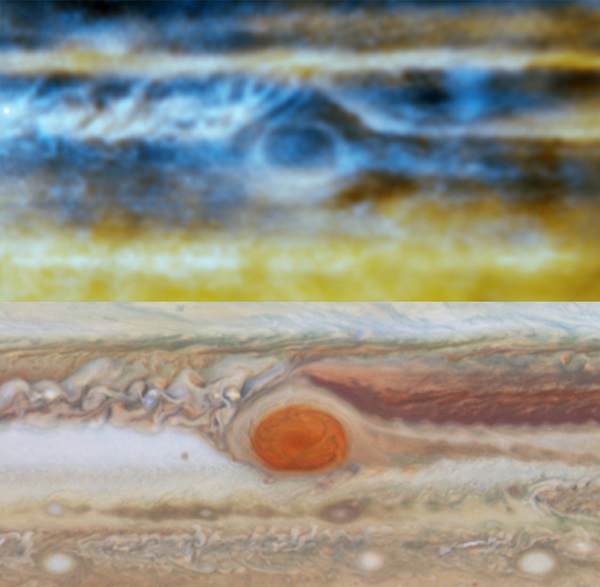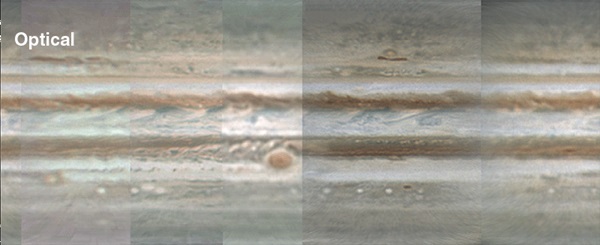Key Takeaways:
- The Galileo mission's probe encountered unusually high concentrations of ammonia (four to five times solar abundance) within Jupiter's atmosphere, a finding now potentially explained by its descent into a localized "hot spot."
- A Berkeley-led team utilized contrasts from Hubble Space Telescope and Very Large Array maps to identify small, oval-shaped regions on Jupiter's surface corresponding to high ammonia concentrations, hypothesized to be these "hot spots."
- These ammonia columns are thought to ascend to the highest cloud layers, subsequently dispersing ammonia at lower pressure levels, which accounts for the observed discrepancy between Jupiter's average atmospheric ammonia depletion and localized abundance.
- Despite advances in understanding the localized ammonia abundances, the underlying cause of this convection remains unidentified, with future insights anticipated from the Juno mission, although challenges in disentangling competing spectral signals are noted.
Now, a Berkeley-led team may have unraveled the mystery. The researchers think that Galileo plunged into a “storm” of ammonia just below the surface of the upper atmosphere, happening onto just the right spot to descend into one of the “hot spots” faintly visible from the surface.
Imke de Pater, said that the Galileo probe showed the columns to be made of four to five times the amount of ammonia seen in the “solar abundance.” That’s a term for the spectrum emanated from the Sun displaying the elements its fusing. She’s quick to point out that in the Sun, similar spectral lines radiate as nitrogen, but nitrogen bonds with hydrogen in the much cooler atmosphere of Jupiter to become ammonia.
But that’s not the case for Jupiter’s violent surface gasses, in which ammonia is much more dispersed over the visible upper atmosphere, but more compressed down below. There was some sort of disharmony there. After mapping the entire surface of Jupiter, the team was able to find small oval shapes that corresponded to high concentrations of ammonia.
These columns reach right up to the highest cloud layers, then disperse the ammonia at these lower pressure levels.
“That explains why, on average, Jupiter’s atmosphere seems to be depleted in ammonia gas while in some places it’s quite abundant,” de Pater said.
The upcoming Juno mission may be able to shed some light, de Pater said, through an instrument meant to measure water abundance. The water line and ammonia line are located near each other on the electromagnetic spectrum. But the two competing signals also may dilute some of the results.
“To disentangle these effects will be pretty hard, but it’s the only experiment that has a chance of doing it,” she said.
To find out what’s really going on, it’d take another Galileo-style atmospheric probe. But even that presents more than a few challenges.
“You need to get it down in the right area. That is really difficult,” de Pater said. “The Galileo probe, just by chance, went down into a hot spot.”
In the meantime, we’ll just have to contend with a mystery in Jupiter’s atmosphere — and the scant breadcrumb trail to find more answers.











